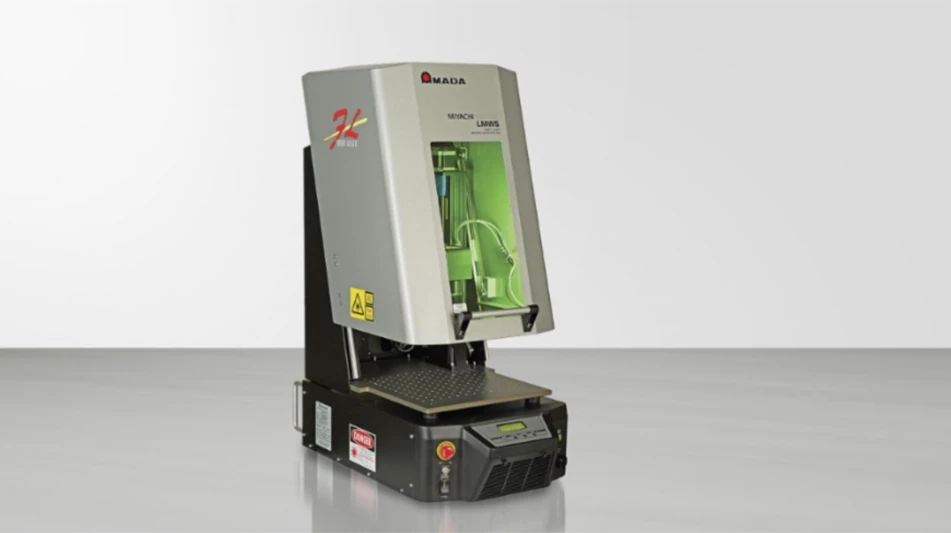.jpg) Sikorsky helicopters are used by all five branches of the United States armed forces, along with military services and commercial operators in 40 nations. |
Sometimes the most experienced technicians or skilled toolmakers need to look to specialists outside when it comes to solving critical service problems.
Such was the case when a legendary helicopter company was confronted with a worldwide problem in cleaning scale from a small, outsourced part that was preventing it from proceeding with production of its helicopters all over the world.
The problem was a carburized bearing surface delivered by a supplier of Sikorsky Aircraft Corp. – designers and builders of advanced helicopters for commercial, industrial, and military use.
“We attempted to remove this scale with a carbide reamer and a diamond lap – to no avail,” says Tony Lawrence, tooling services manager for Sikorsky Product Center Core Services.
“The material in question was 9310 [alloy steel], and very hard, around 66RC (Rockwell C scale hardness),” Lawrence explains.
It required a tool of equal toughness to do the job properly. He notes that his group had used diamond Flex-Hones, available from Los Angeles, Calif.-based Brush Research Manufacturing in a very limited set of applications previously, but certainly not for this high volume situation they now faced.
.jpg) Flex-Hone is a ball-style tool characterized by a shaft with small, abrasive globules permanently mounted to flexible filaments. |
The Flex-Hone is a ball-style tool characterized by a shaft with small, abrasive globules that are permanently mounted to flexible filaments. The tool, which can be mounted in a hand drill motor or a machine tool chuck, is used for finishing or resurfacing of the hard metals, ceramics and other tough materials used in items such as ports, sleeves, and cylindrical bores. Quite often, the flexible hone is used instead of cumbersome conventional equipment such as CNC-based hones and anvil tools.
The flexible hone is available in many sizes with a wide selection of grit material, allowing the tool to be matched with a variety of materials from very hard, heat-treated alloys to softer, non-ferrous metals. Custom sizes and grits are also available directly from the manufacturer.
In the case of Sikorsky, the flexible hone needed to be constructed with diamond crystal grit. Brush Research offers a diamond flex-hone in a variety of mesh sizes that can easily produce finishes on hard materials to a range of Ra of 0.1µm to 0.15µm. Sikorsky also needed the diamond hones in a very small size and large volume.
“So now that we had the first success, we were going to need to produce thousands of these [flexible hones], since we were at a production stop,” Lawrence continues. “We contacted Brush Research and explained our dilemma. Two days later we had the first production run of brushes and we were able to ship our product again to customers all over the world.”
Grant Fowlie, Brush Research customer service manager, says that custom orders such as this one require close coordination with his team and the customer, as well as some highly specialized equipment.
“Quite often the customer has a pretty good idea of what he is looking for in a flexible hone,” Fowlie explains. “For example, they know the size and hardness of the material they are dealing with and may even know the kind of honing grit required. In cases like those we may simply send one or two standard hones so they can see how the tools work for their application.”
Fowlie adds that in other cases his team requests samples of the material to be honed and then performs tests on site to ensure that the company’s recommendations are well founded.
For this, sophisticated surface analysis equipment is often used. According to Fowlie, this free service for customers means Brush Research can run tests using a variety of tools to show the customer exactly what they are dealing with.
“Surface finish analysis will give you roughness [Ra] and a variety of other measurements as far as surface finishing analysis goes, including peak height, valley depth, bearing areas, and other specifications that have their own importance in different applications,” Fowlie says.
For the Sikorsky project, production of the thousands of Flex-Hones put a slight strain on the BRM staff, but Fowlie explains that the company is oriented to quick turnaround. Because Brush Research’s facilities are consolidated in a single Los Angeles location, orders are coordinated with efficiency and are normally shipped within days or weeks.
“This product worked better than expectation and these folks [BRM] were unbelievably responsive... it does not get any better than that,” Lawrence states.
Fowlie points out that the Flex-Hone is well suited to numerous aerospace applications, ranging from very small to quite large.
“We produce very slender hones for tiny IDs, but also produce tools for use on large jet engines that required hones 10" to 15" in diameter.”
Brush Research Mfg. Co. Inc.
Los Angeles, Calif.
www.brushresearch.com
Get curated news on YOUR industry.
Enter your email to receive our newsletters.
Explore the July 2013 Issue
Check out more from this issue and find your next story to read.
Latest from Aerospace Manufacturing and Design
- GE Aerospace secures Air Force engine contract
- Thomson Industries' online sizing and selection tool
- #53 - Manufacturing Matters - 2024 Leaders in Manufacturing Roundtable
- Join us for insights on one of the hottest topics in manufacturing!
- You can still register for March’s Manufacturing Lunch + Learn!
- Ohio creates Youngstown Innovation Hub for Aerospace and Defense
- Tormach’s Chip Conveyor Kit for the 1500MX CNC Mill
- How to Reduce First Article Inspection Creation Time by 70% to 90% with DISCUS Software






